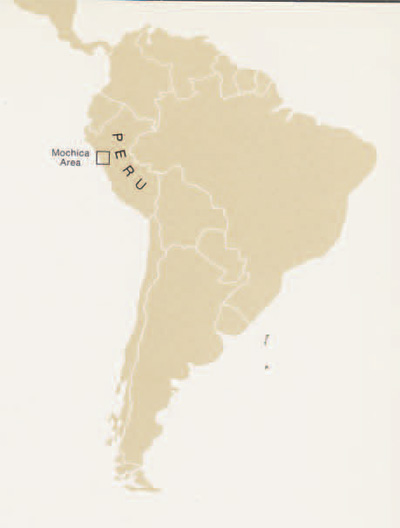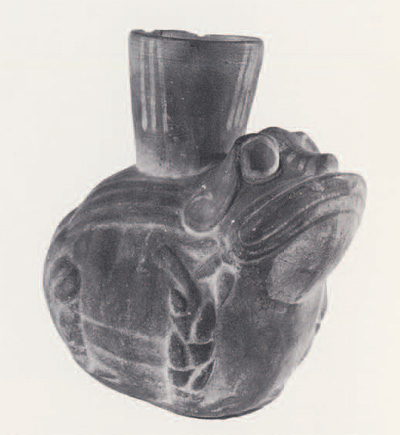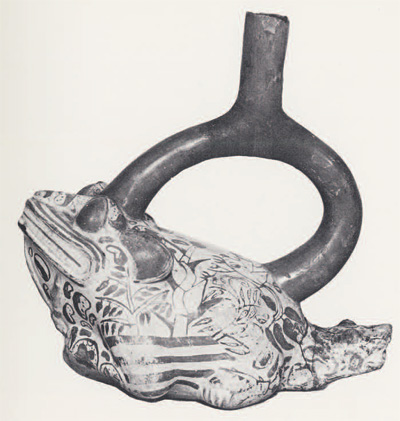 On a recent expedition to my optician’s on Chestnut Street I spotted an interesting Peruvian pottery frog effigy (now Museum catalogue number 68-5-1) in the window of an art gallery. Pre-Columbian art is not commonly found in Philadelphia antique shops and galleries, so I was delighted to find such a good specimen at a very fair price. For many years the Museum has had in its American collection a quite similar frog (No. 34416). Our new frog will make a very nice companion for it.
On a recent expedition to my optician’s on Chestnut Street I spotted an interesting Peruvian pottery frog effigy (now Museum catalogue number 68-5-1) in the window of an art gallery. Pre-Columbian art is not commonly found in Philadelphia antique shops and galleries, so I was delighted to find such a good specimen at a very fair price. For many years the Museum has had in its American collection a quite similar frog (No. 34416). Our new frog will make a very nice companion for it.
Both of the frogs lack any information on their exact proveniences, but they are clearly from the North Coast of Peru. They are products of the Mochica (sometimes called Moche) culture, which dates from about the beginning of the Christian era to about A.D. 500. The stirrup spout and dark red on cream painting of the old frog are typical of this culture, which has given us so many depictions of Mochica life and surroundings in both modelling and painting. The parallel sides of the upper part of the stirrup spout are characteristic of the fourth stage of five sequent stages of the history of Mochica ceramics, the exact date of which has not yet been determined. The new frog is less colorful, with white paint on reddish clay. Its spout resembles those of Mochica jars, and it lacks the curious modelled head (that also resembles a frog) that protrudes from the rear of the old frog.


Frog effigies are found commonly in northwestern South America and in lower Central America, where many were cast in gold. In Peru I have seen none from the highlands and I cannot recall having seen any in collections from south of the Mochica area. Since there is always a connection between frogs and water, it is generally believed that frog effigies were symbolic of water and agricultural success. Mochica frog effigies provide firmer evidence of this belief than do those from farther north because they bear depictions of cultivated plants, some of which can be positively identified. I think that there is little doubt that the plant modelled on both sides of the new frog, rising from where the forelegs should be, is corn. The three modelled objects springing from the corner of the mouth are probably meant to be chile peppers. On the old frog there are many more plant depictions. Lima beans appear on the head, chin, and throat. Further to the right near the corner of the mouth, a plant with solid color fruits may be a pepper. The large plant, next to the right, suggests corn, but this is not certain. More peppers, spotted and solid, appear on the lower back with an unidentified plant with triple-forked leaves.
If you look closely, you will note that the two frogs both have what appear to be ears. These suggest the possibility that the effigies represent composite mythical beings. The “ears,” especially those of the old frog, look to me like feline ears. In view of the importance of felines, probably jaguars, pumas, or smaller wild cats in Mochica art, composite frog-cats would not be surprising. The Mochica Indians looked at nature in a way that often defies interpretation, but this, in addition to its enormous range of subject matter, is what makes their art so fascinating.
